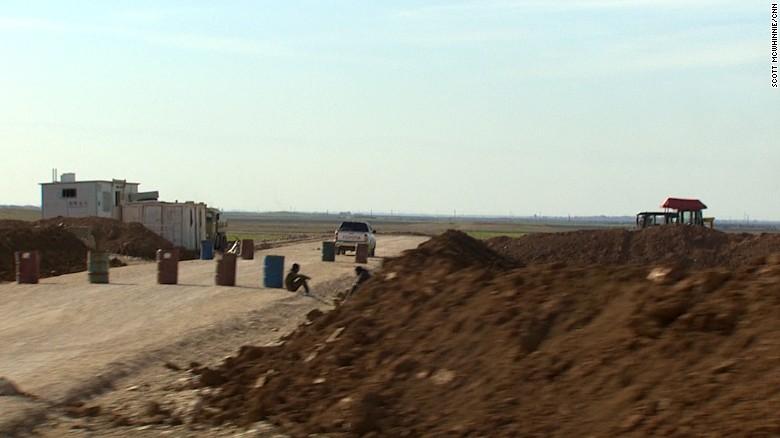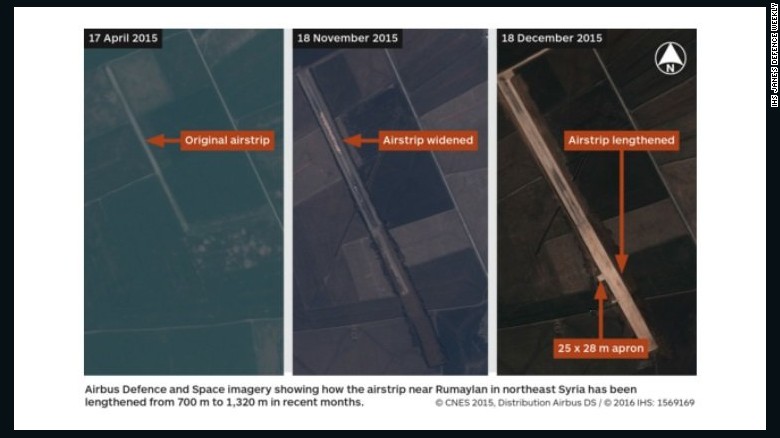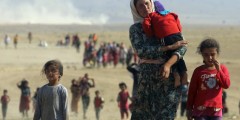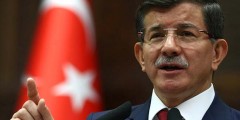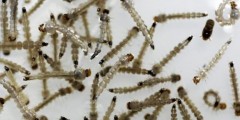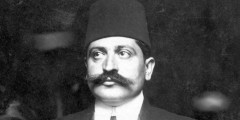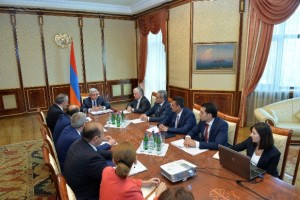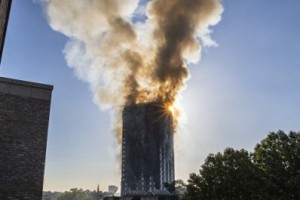The rutted road stretches into the distance across the plains of Hasakah. Herdsmen watch over their few dozen sheep. A scattering of oil pumps nod lazily as they extract a few dollars of crude from deep below. Above, the contrails left by coalition warplanes drift across the blue sky in hazy circles.
We bump through the mud-brick villages. Wide-eyed children stop playing marbles in the dirt to gaze at us. Old men wearing keffiyehs, the traditional red and white headscarf, peer suspiciously. This corner of northern Syria -- close to the border with Iraq -- is a mix of Arab tribes and Kurds, Muslims and Christians. It has long been neglected, despite its oil and farming, by the Syrian regime hundreds of miles away in Damascus. But in the war against ISIS, Hasakah is suddenly a place of interest, and especially for the Pentagon.
Our destination is an airstrip used for crop-spraying. From satellite images we've worked out where it is. It would be easy to miss: just a strip of concrete that almost sinks into the dark soil. But for all its modesty, this is the United States' latest outpost in its deepening campaign against ISIS.
An elderly farmer living nearby, rake-thin with a weathered brown face, offers tea to the minibus of strange visitors, breaking off from his duties tending sheep on behalf of a sheikh of the Shammar tribe, a powerful Arab group that has good relations with the Kurds.
He says he has heard helicopters and other aircraft. But he's not seen anything land here. He seems bemused by the interest.
This location has been chosen because it's just 100 miles (160 kilometers) from ISIS frontline positions and some of its lucrative oil fields, but well within territory held by Kurdish fighters known as the YPG. The runway is being nearly doubled in length from about 2,300 feet to 4,330 feet (700 to 1,320 meters) -- long enough, say, to receive C130 transport planes. A small apron is also being paved.
There is no control tower, no lights, certainly no U.S. uniforms to be seen -- just a berm of fresh earth thrown up to mark the perimeter and a tractor chugging along as it flattens the surface of the newly extended runway. A barrier is manned by two local men who lounge in the sunshine smoking. But there is more security than at first appears. Minutes after we begin filming, two men of the YPG's Asaish security force arrive in a pickup truck and escort us away.
"It's a closed military zone," says one of them. Suicide bombings -- invariably claimed by ISIS -- are not uncommon in Hasakah.
This "drop-and-go" strip will help the U.S. supply the Kurds and the Arab tribes allied with them and assist the handful of U.S. Special Forces deployed to this part of Syria.
Choosing its words carefully, the U.S. Defense Department says it has not "taken control" of any airfield in Syria.
"That said, U.S. forces in Syria are consistently looking for ways to increase efficiency for logistics and personnel recovery support," said a spokesman for U.S. Central Command last month.
The YPG -- which can field some 25,000 men and women -- has gradually become one of the most effective partners on the ground for the U.S. After forcing ISIS out of the town of Kobani on the Turkish border in 2014, with the help of intense airstrikes, its fighters have driven ISIS out of hundreds of square miles of territory. They now control much of the border with Turkey, hindering ISIS access to the outside world.
There are regime pockets in towns like Qamishli and Hasakah, redoubts blocked by street barriers and watched over by giant posters of Syrian President Bashar al-Assad and his late father Hafez. But the Kurds are the dominant military force in this region, despite having little more than rifles and pickup trucks.






